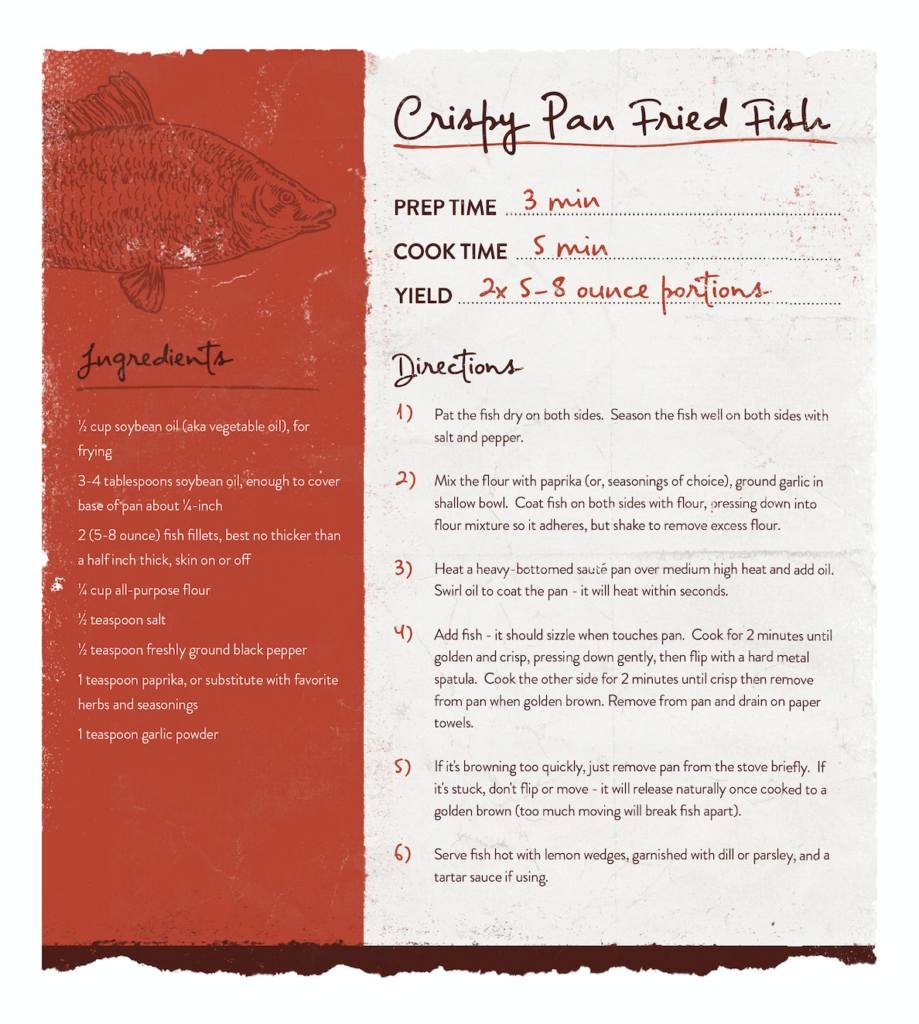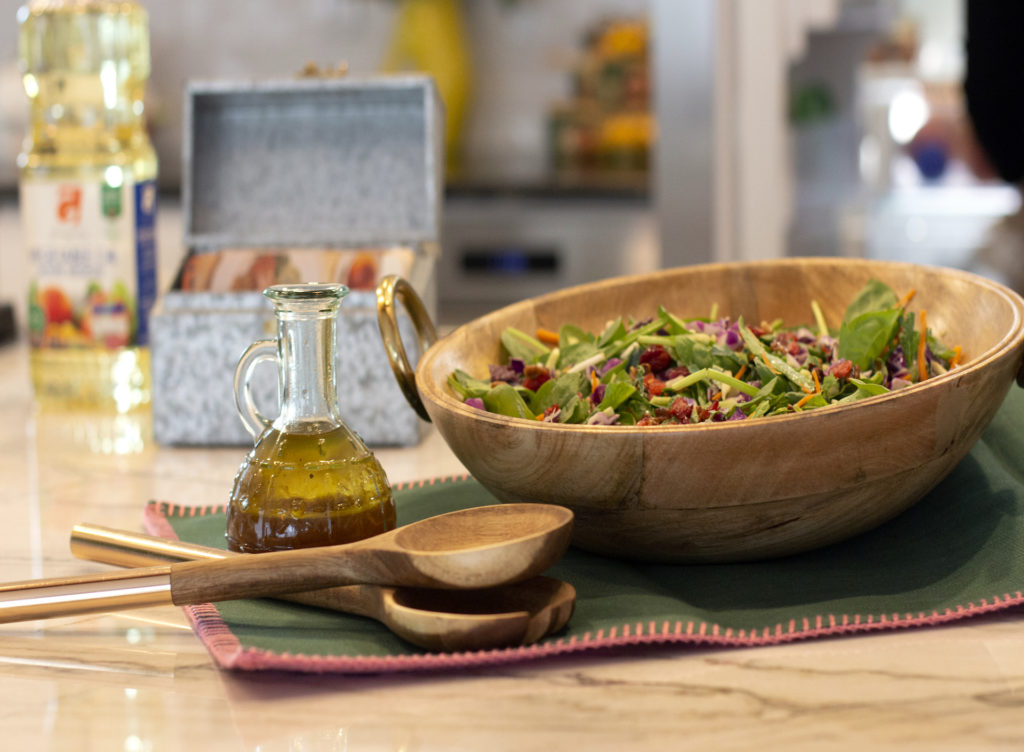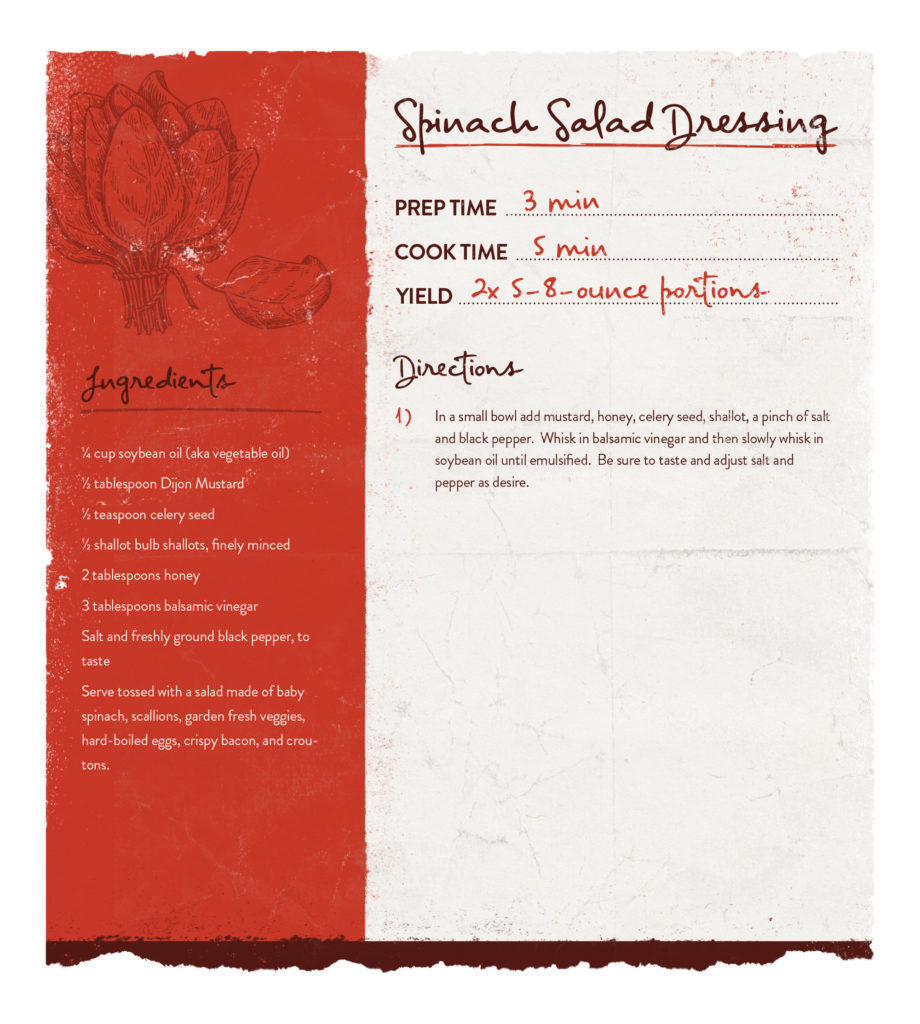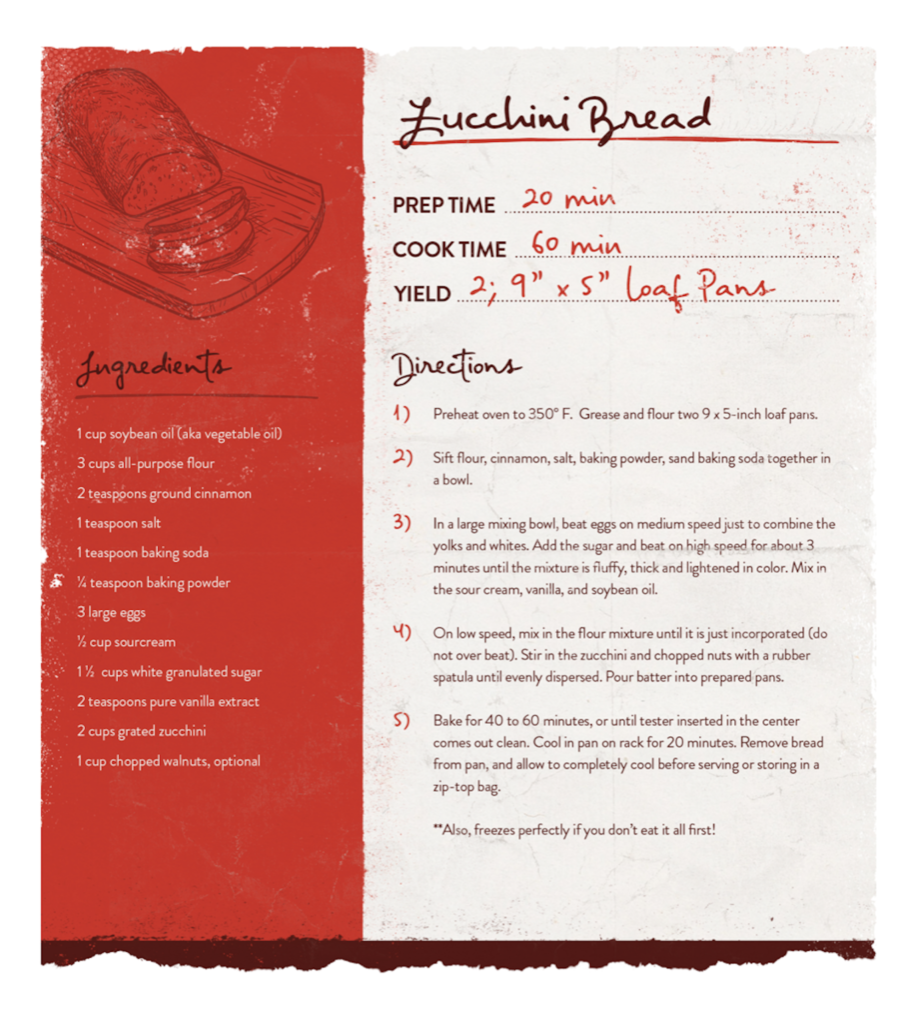Search
As a chef and culinary educator, I get a lot of questions about cooking oils, especially when it comes to baking, frying, and finding a neutral oil for blending. I would love to say the answers come from years of studying culinary arts at universities and in kitchens across the globe, but in reality, the answers were found on the tattered cards of my family’s recipe boxes.
I earned the title of “Retro Rad Chef” by digging through my family’s recipe boxes and mixing new life into old favorites. Whether baking, frying, sautéing, or making dressings and dips, my culinary ancestors most often turned to soybean oil. Of course, they didn’t choose this oil because it’s versatile and heart healthy¹, they just knew their kitchen creations tasted terrific when they used it.
So let’s flip through some of my favorite family recipes to see why I encourage cooks of every kind to use soybean oil in their own family dishes.
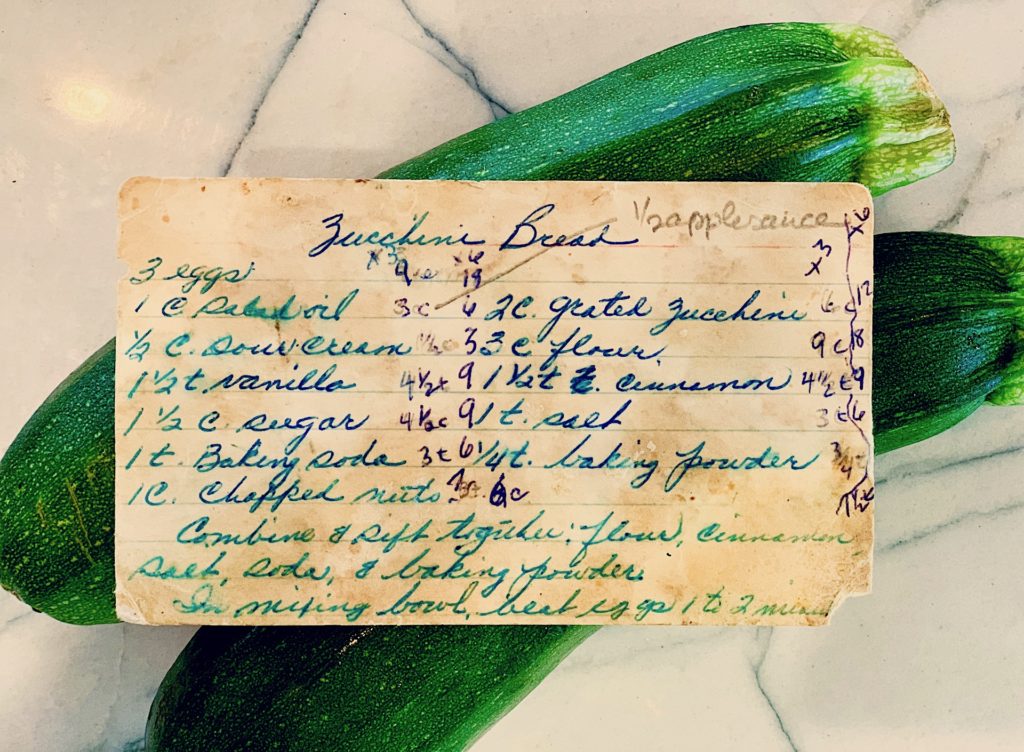
1. Fry Freely and Let Your Skillets Sizzle!
The key to frying is to use oil with a high smoke point that allows for optimum cooking temperatures, while maintaining a neutral flavor that allows the food’s natural flavors to shine through. With its extremely high smoke point – as high as 450°F – soybean oil is great for high heat cooking. And because it has such a high smoke point, it can be reused; just let it cool, strain through a sieve to get any food bits out, and decant it into a bottle for use in many fried dishes to come – like your Friday night fish fries!
Growing up near Lake Erie, Friday night fish fries were a weekly tradition. Delicious crispy fried fish was the goal, and soybean oil was the key to achieving it! Grandma Shirley’s Crispy Pan Fried Fish is the inspiration for this recipe. I still remember her drill: “don’t cut the fish too thick, don’t dredge it in too much flour, and make sure the pan and oil are hot!”

Crispy Pan Fried Fish
Recipe inspired by Grandmother Shirley Nordquest.
2. Marinate on This!
Oil is an essential component in marinades because it helps transfer fat-soluble flavors into the meat, helps meat and vegetables retain moisture while cooking, and helps balance flavor profiles by preventing sharp or acidic flavors from overwhelming the dish. Grab a light, neutral tasting oil – like soybean oil – to allow your meats and vegetables to shine. At least 2 hours before roasting or grilling, whisk soybean oil together with your favorite spices and pour over meat and veggies.
For enhanced flavor, marinate overnight.
My father inspired this marinade that’s fresh, sweet, savory, smoky and easy to make! Although, it goes with everything grillable, we used it most often on “Dad’s Famous Chicken” – chicken and vegetables marinated and then grilled in foil packets until fall-off-the-bone tender.
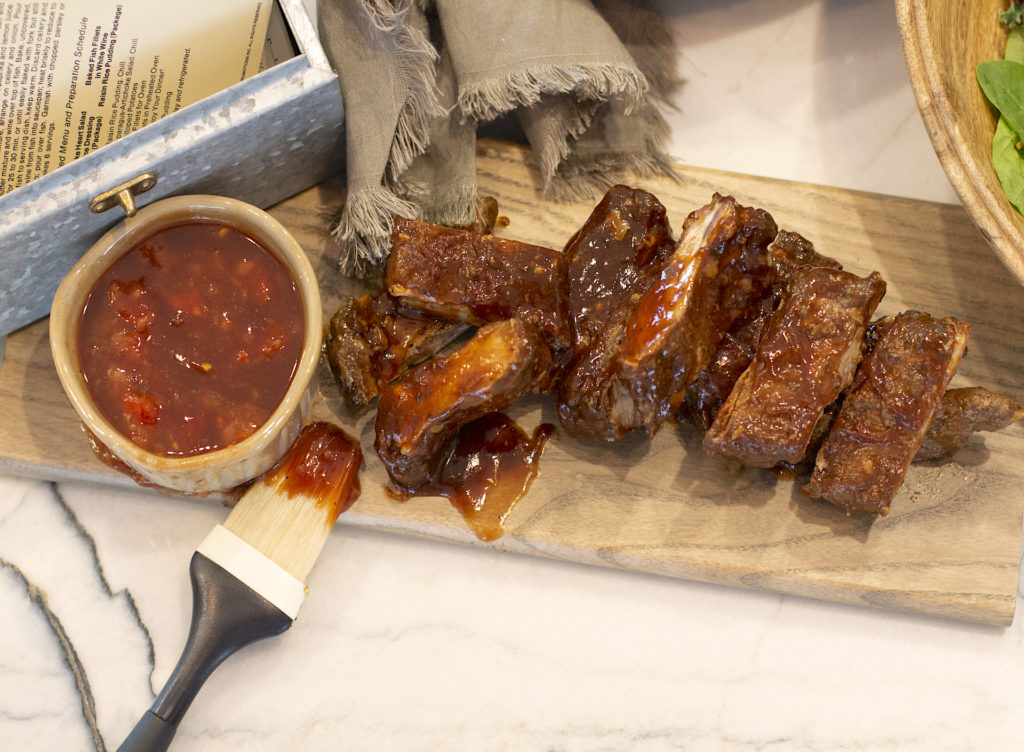
Bar-B-Q Marinade
Recipe inspired by Father Eric Hummel.
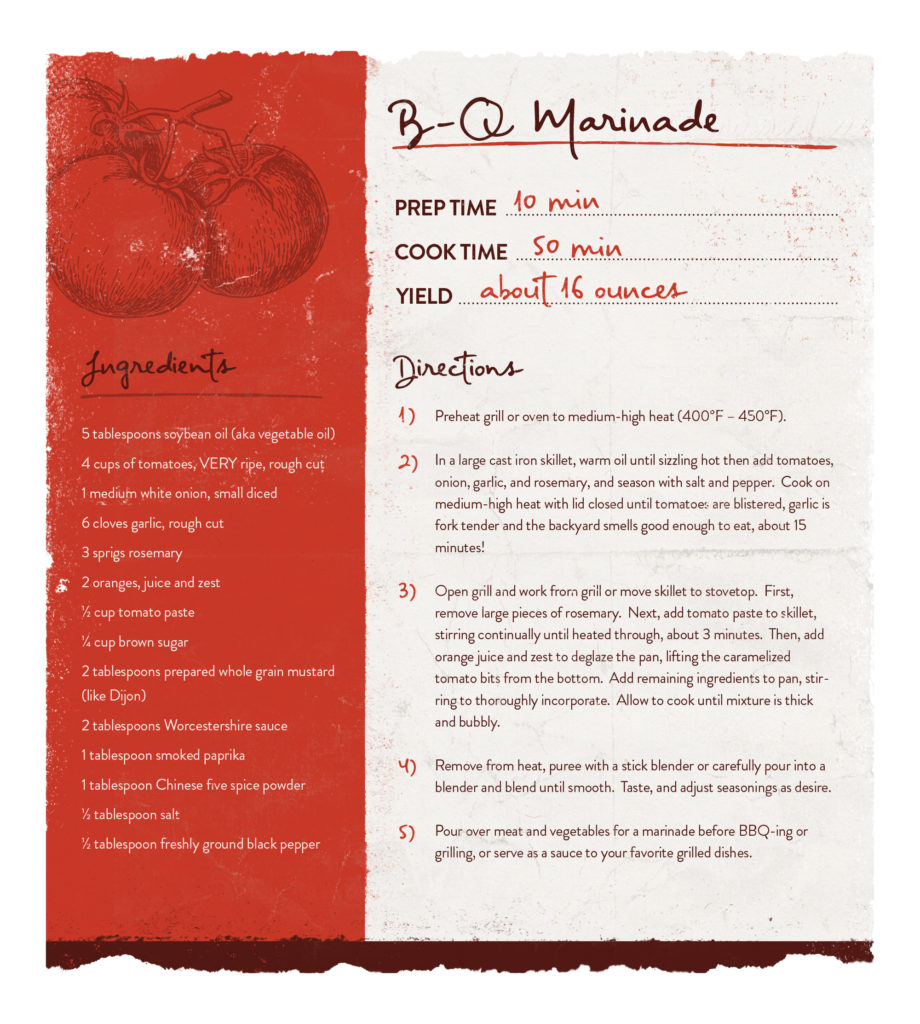
3. Dressings and Condiments
Soybean oil – often labeled as vegetable oil in grocery stores – is the perfect ingredient for dressings and condiments. The FDA has confirmed that soybean oil is heart healthy, and may reduce the risk of coronary heart disease when replacing saturated fats. That means that I can feel good serving it to my family! It blends well with other fats and oils, making it an ideal ingredient in salad dressings and sauces. I like to blend it into my salad dressing, mayo, tartar sauce, and aioli.
My mom’s Spinach Salad is a staple for our family every summer when our gardens produce an abundance of fresh spinach. The dressing is definitely the star of the salad!
Spinach Salad Dressing
Recipe inspired by Mother Carol Hummel.
Baked to Perfection (Fat has function)!
The primary role of fat in baking is to add richness and a more luxurious mouthfeel while also adding moisture to baked goods. Liquid fats — oils — add richness and tenderness to baked goods because they do not solidify when cooled.
We always had way more zucchini than we could eat or give away until my mom created our family’s much beloved Zucchini Bread recipe. Using soybean oil allows for the natural sweetness of the homegrown zucchini to shine, and keeps the bread moist even after it is frozen!
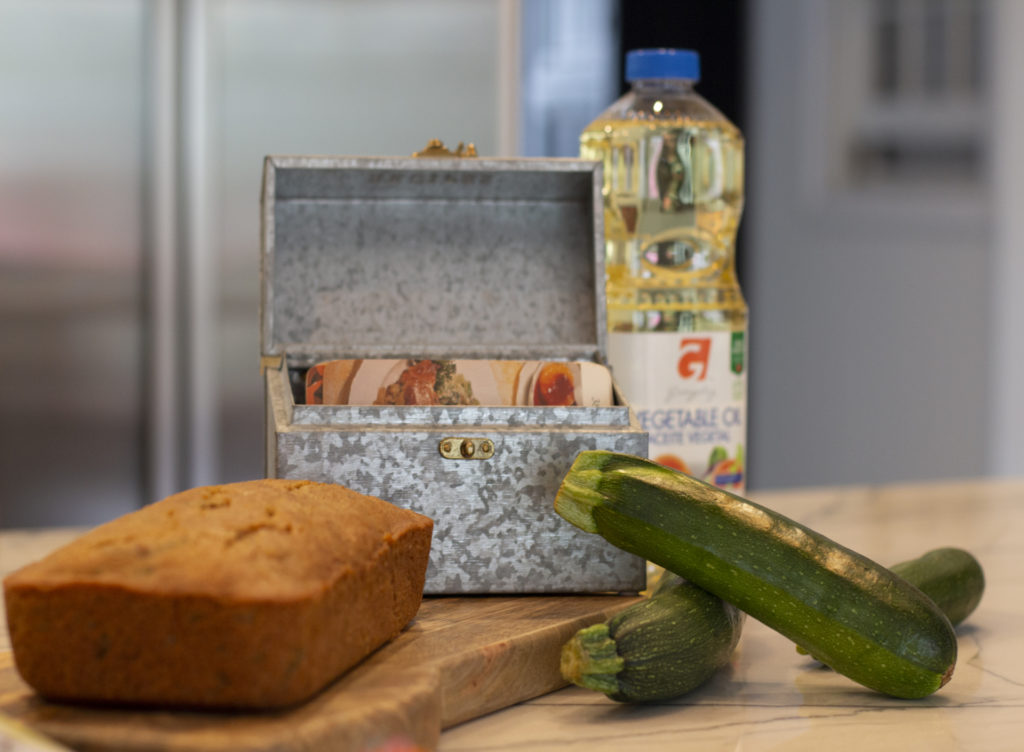
Zucchini Bread
Recipe courtesy of Emily Ellyn’s Mother, Carol Hummel.
FAMILY MATTERS!
Like my culinary ancestors before me, I keep my kitchen stocked with ingredients that I can feel good about giving to my family. As America’s #1 cooking oil², soybean oil has probably been a trusted staple for generations of cooks in your family too, though you may call it “vegetable oil” around the table. Keep that tradition alive, and feel good about feeding your family heart healthy ingredients by keeping your pantry stocked with heart healthy¹ soybean oil. See for yourself how versatile soy can be, and I’m sure you’ll find soy is a joy to cook with!
I only endorse brands and products I love!

Therefore, all opinions expressed are my own. I received compensation to write this post
as a Soy Connection partner.
References
¹U.S. Food and Drug Administration. “Soybean Oil and Reduced Risk of Coronary Heart Disease.” July 31, 2017.
https://www.fda.gov/downloads/Food/IngredientsPackagingLabeling/%20LabelingNutrition/UCM568508.pdf.
Supportive but not conclusive scientific evidence suggests that eating about 1½ tablespoons (20.5 grams) daily of soybean oil, which contains unsaturated fat, may reduce the risk of coronary heart disease. To achieve this possible benefit, soybean oil is to replace saturated fat and not increase the total number of calories you eat in a day. One serving of this product contains 14 grams of soybean oil.
²USDA Economic Research Service. “Oil Crops Yearbook.” https://www.ers.usda.gov/data-products/oil-crops-yearbook. March 30, 2018. Table 31; Domestic Disappearance.
³United Soybean Board. http://unitedsoybean.org/media-center/issue-briefs/sustainability/.


